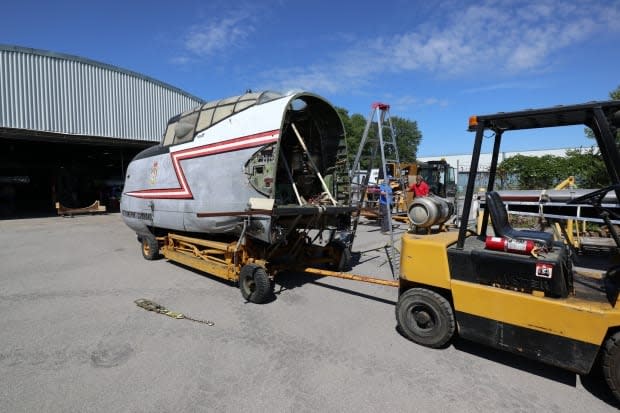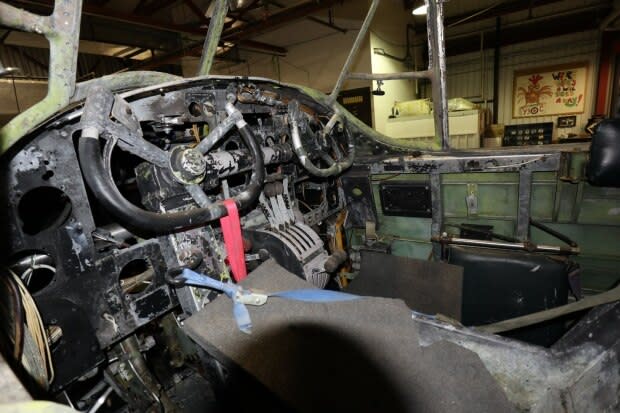Lancaster bomber restoration to be complete in 2024
A Lancaster bomber that spent 50 years in Edmundston will never fly again, but when a long renovation job is finished, the plane will look just as it did before its first flight.
The Second World War plane is at the National Air Force Museum of Canada being restored by a passionate group of volunteers.
The retired aviation workers are labouring to "get it just absolutely showroom museum-quality to put it back on display," said museum spokesperson Theo Holownia.
One of the last survivors of a celebrated wartime fleet, the plane is now in several pieces in the restoration workshop, so the crew can determine what parts and pieces are needed to get it ready for display.

"The nose is completely separated and they're working on stripping the cockpit down," Holownia said. "They're also working on the landing gear at the moment."
The volunteers are also removing the tires from the rims to determine the condition of the rubber.

Holownia said the crew figures all of the windows in the cockpit will need to be replaced because they have deteriorated from the sun.
The bomber was on display in Edmundston on the grass near the Trans-Canada Highway for decades before being shipped to Trenton, Ont., two years ago.
Some panels on the plane were damaged in the move, and will need to be replaced, Holownia said.
The Lancaster bomber, which flew on 12 operational missions during the Second World War, will be ready for display at the National Air Force Museum in 2024.

"They're taking all of the rivets out and then putting them back in," Holownia said.
"The whole thing's gonna be stripped and repainted and it's a very, very time-consuming process."
Holownia said the 20 volunteers working on the plane are eager to work on such a rare project, adding that some of the crew would have worked on similar planes during their careers.
"It's just an incredible thing for them to get to contribute not only to the museum but to preserving air force history here in Canada."
Original parts
The Lancaster bomber will be restored using original parts, or as much "humanly possibly," Holownia said.
Holownia laughed when he said he doesn't know where the volunteers find the parts for such a rare plane, but he suspects they're helped by their industry experience.
"Five hundred years worth of mechanical aviation experience in that workshop — if you put it all together."


